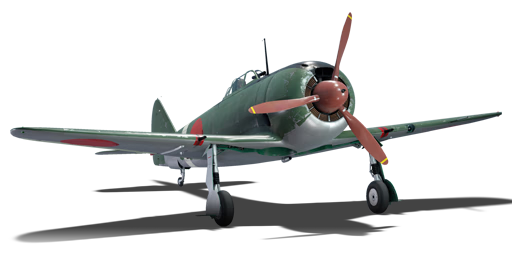




The Ki-44-I, designated as the Type 2 Single-Seat Fighter, Model I (二式単座戦闘機一型) was developed alongside the lighter Ki-43 and the twin-engined Ki-45 in response to Western aircraft with retractable landing gear, such as the German Bf 109 and the British Spitfire, which were introduced shortly after the Japanese deployment of the Ki-27 in 1937. While the Ki-43-I was designed as an agile, machine-gun-armed fighter, the Ki-44 was intended to be a heavier, faster, cannon-armed single-seat aircraft, with the Ki-45 ko serving as a long-range twin-engine aircraft to complement these planes. During its development and service, many Japanese aviators were opposed to the concept of a heavier single-engine aircraft that sacrificed agility for other factors. These doctrinal clashes were temporarily quelled by the tactics employed by the Soviet Air Force during the Nomonhan Incident, where the I-16 outperformed Japanese pilots using hit-and-run tactics and faster aircraft. Nakajima, tasked with developing all three aircraft, had little experience with "heavy" planes, resulting in the Ki-44 being lighter than a Bf 109, yet still valuable due to its high speed and formidable firepower. It even outperformed the Japanese-imported Bf 109 E-7 in some aspects, despite its poor visibility and high landing speed requirements. The Ki-44 entered service in 1941, but many veteran Japanese pilots continued to dislike the aircraft, even though it achieved some successes in its smaller numbers.
While the Ki-44 might seem less appealing to Japanese aviators compared to the Army's Ki-43 or the Navy's A6M, it remains a fairly nimble aircraft that simply requires a different strategy. Boom-and-zoom tactics are key to the Ki-44's success; with its more powerful engine and increased firepower, the pilot should climb and dive on targets for maximum effect, regaining altitude for subsequent attacks. Although the Ki-44 is agile enough to change tactics or manoeuvres on the fly, pilots should note that it isn't as nimble as the previously mentioned aircraft.
flaps
flaps
flaps
brake
| Belt | Belt filling | Armor penetration (mm) at a distance: | |||||
|---|---|---|---|---|---|---|---|
| 10 m | 100 m | 500 m | 1000 m | 1500 m | 2000 m | ||
| AP-T/AP/HEF-I | 21 | 19 | 13 | 7 | 4 | 3 | |
| AP-T/AP/HEF-I | 21 | 19 | 13 | 7 | 4 | 3 | |
| AP-T/HEF-I/HEF-I/HEF-I | 21 | 19 | 13 | 7 | 4 | 3 | |
| AP-T/AP/AP-T | 21 | 19 | 13 | 7 | 4 | 3 | |
| AP/HEF-I/HEF-I/HEF-I | 21 | 19 | 13 | 7 | 4 | 3 | |
| Belt | Belt filling | Armor penetration (mm) at a distance: | |||||
|---|---|---|---|---|---|---|---|
| 10 m | 100 m | 500 m | 1000 m | 1500 m | 2000 m | ||
| T/AP/IAI/AP/I | 13 | 12 | 7 | 3 | 2 | 0 | |
| T/AP/IAI/AP | 13 | 12 | 7 | 3 | 2 | 0 | |
| T/T/T/AP | 13 | 12 | 7 | 3 | 2 | 0 | |
| I/AP/AP/AP/IAI | 13 | 12 | 7 | 3 | 2 | 0 | |












Flight performance | |
|---|---|
Survivability |
|---|
Weaponry |
|---|